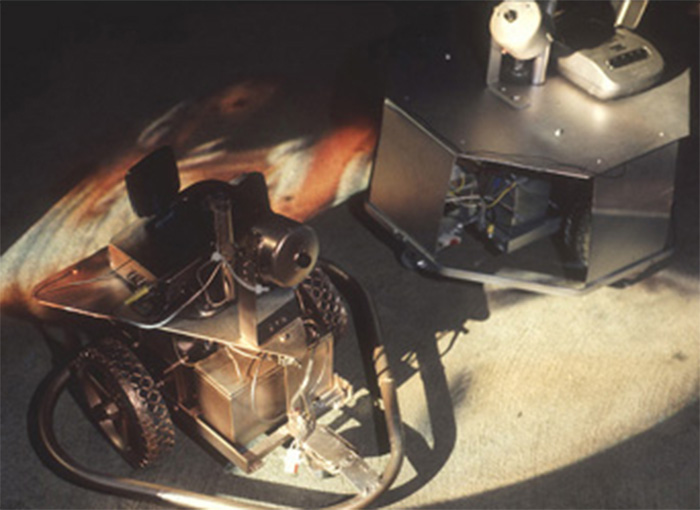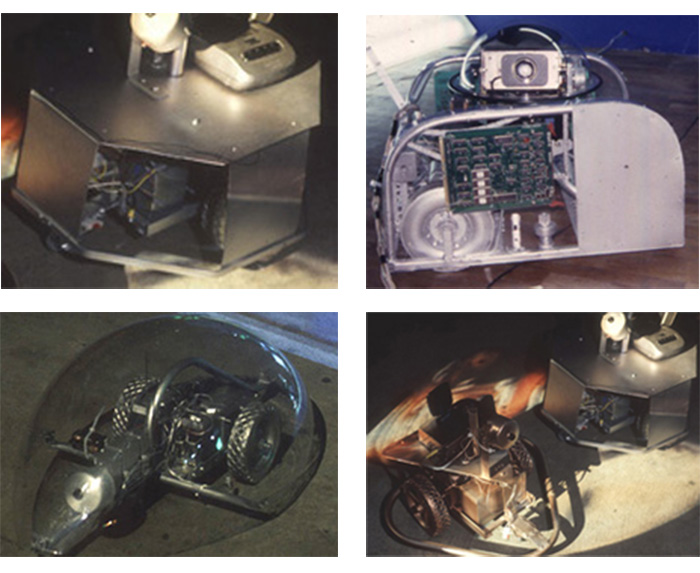The Hidden Archivists at the Anchorage
CREATIVE TIME presents
as part of ART IN THE ANCHORAGE
June 4-August 3, 1997GLOBE THEATER
A Robotic Pageant
Act II, Scene I:
The Hidden Archivists at the Anchorage
PLAYERS:
Six monastic robots:
THE SHIP’S DETECTIVE, The Intrepid Detective of the good ship Beagle
SHE, A recasting of H. Rider Haggard’s Fictive Character
MANUEL FRANCISCO DE BARROS E SOUSA DE MESQUITA DE MACEDO LEITAO E CARVALHOSA, VISCONDE DE SANTAREM (1791-1856),
An early map historian, publisher of the facsimile edition
_Essai sur l’histoire de la cosmographie et de la cartographie pendant le moyen age_;
3 vols, Paris, l849-52), inventor of the word “cartographie”.
LIBRA, Keeper of the peace, conductor of jurisprudence in the event of ends merits means disputes
KIRU, Wizard and Librarian of Juxtapositions In All Their Degrees
FOUR PROJECTOR TOWERS
north
south
east
west
TIMELINE
| 1865: | John Roebling and Wilhelm Hildenbrand draw up plans for the Brooklyn Bridge which include a concealed monastic enclosure in the North Stone Chamber of its Brooklyn Tower. Here, they hope to house curious robotic wizards pledged to chronicle, display and interpret the history of the world. |
| 1869: | President Ulysses S. Grant signs the Bill approving the plan, but is kept in the dark in regard to the secret monastic enclosure. |
| July 1869: | After his father’s death while attempting to fix the exact location for the Brooklyn Tower, Washington Roebling completes the Bridge along with the aforesaid secret monastic enclosure. The chamber is sealed in the manner of Ancient Egyptian tombs to safeguard it from plunderers and, also, to bypass having to file forms for non-profit status. |
| Summer 1997: | The North Stone Chamber (recently stumbled upon by a small child searching for his lost slinky and mistaking the Anchorage for Fort Da) has been uncovered to reveal the robot wizards, ali ve, and still as busy as bees in a hive, ants in a hill, or prairie dogs in towns. Now we all can witness the gathering of robotic entities of varied places, times and orientations as they continue to archive, display and interpret our past, present and future. |


